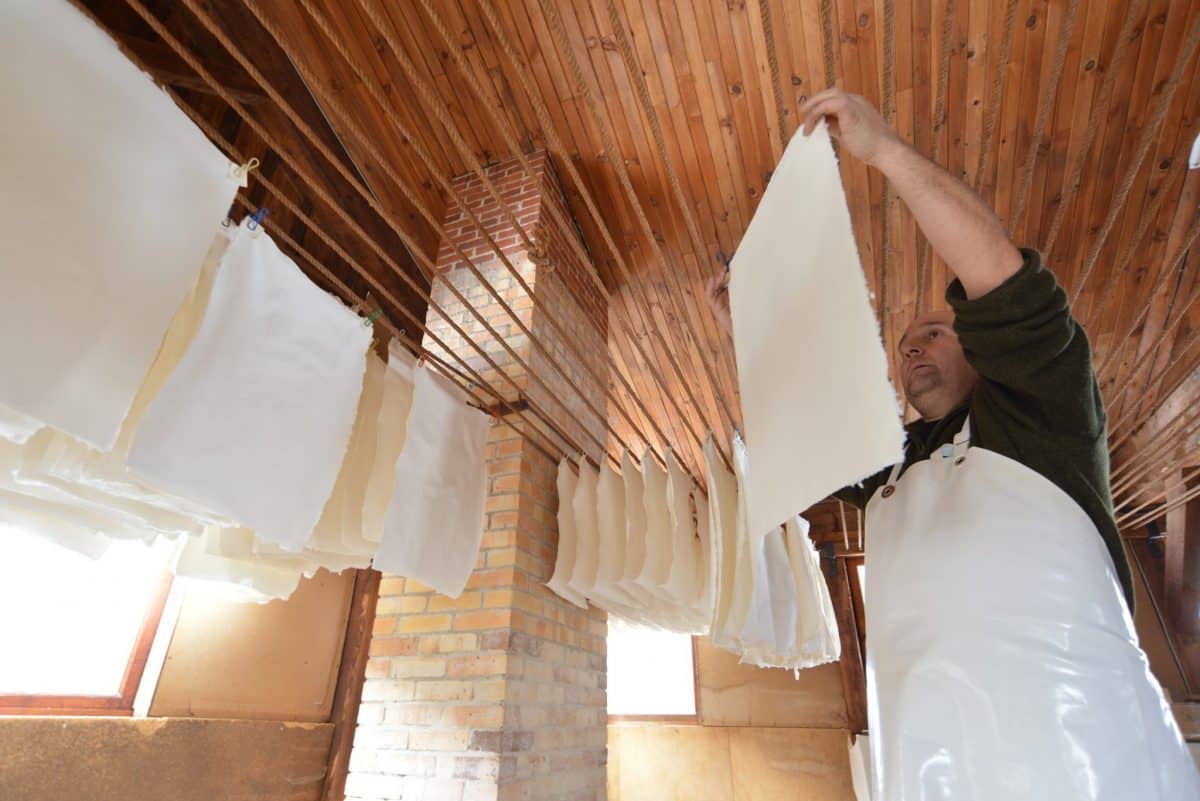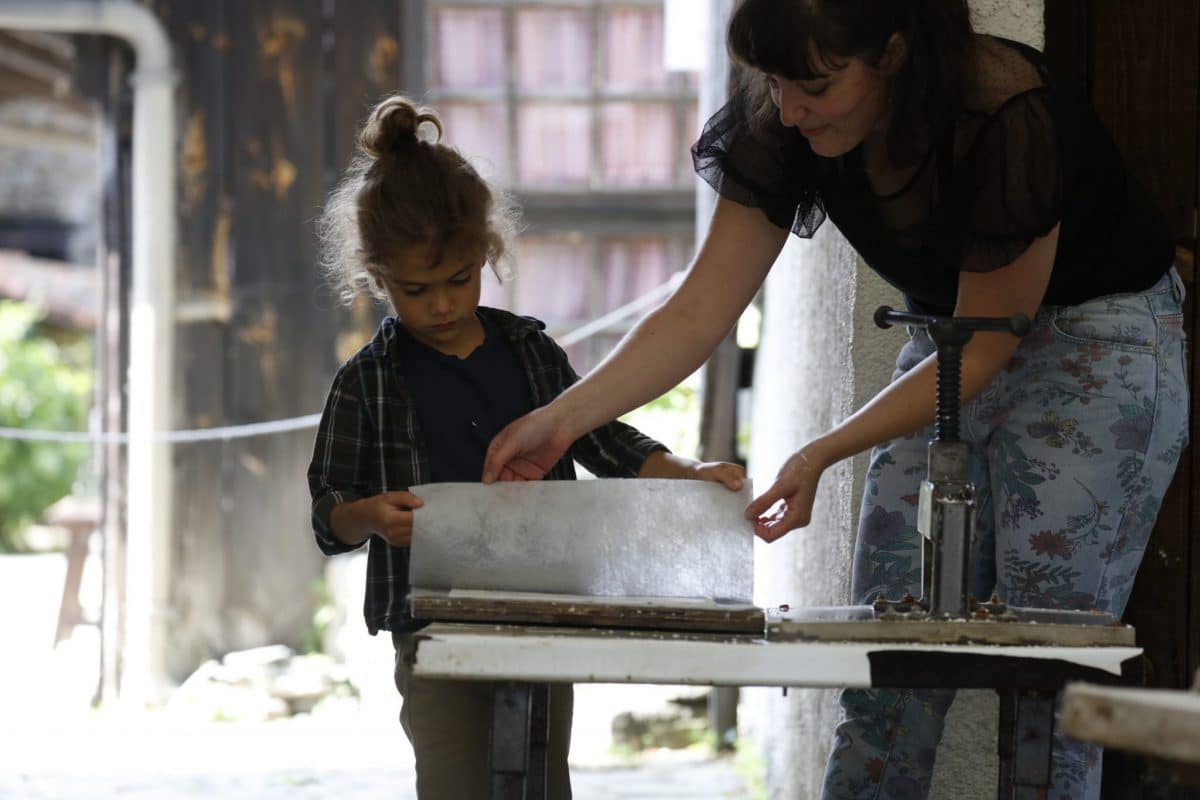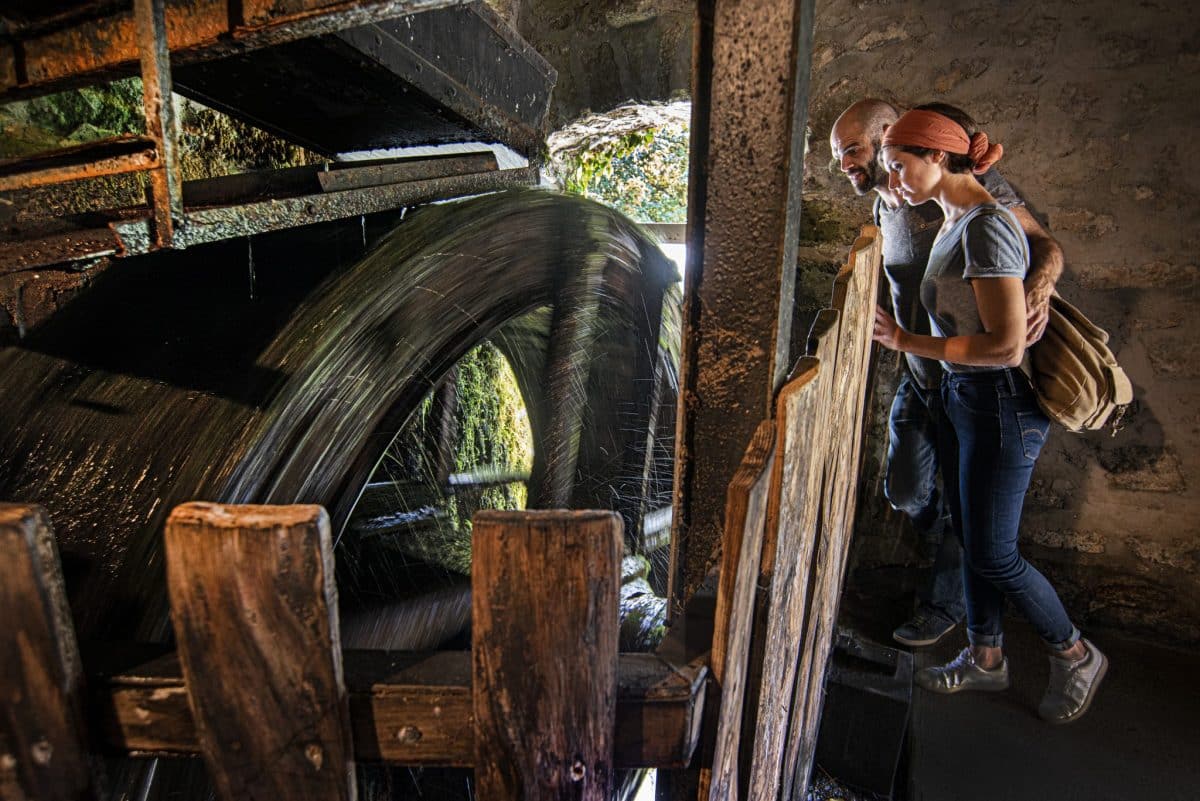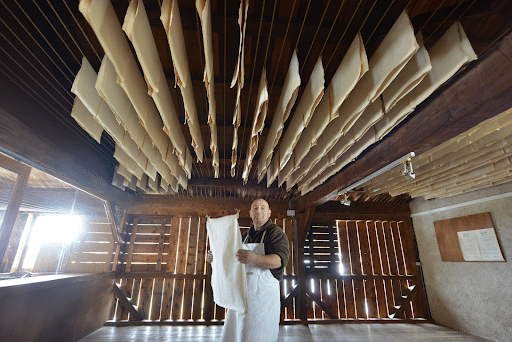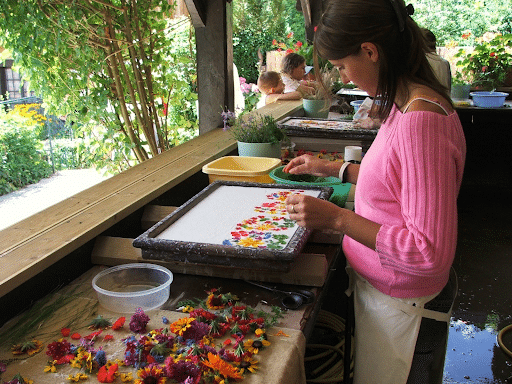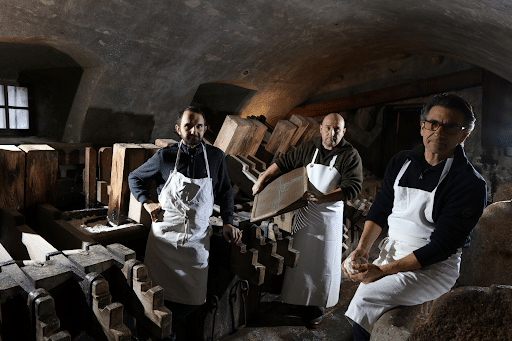Discover the town of Ambert in Auvergne, the cradle of paper in France
Nestled in the heart of the Livradois-Forez Regional Natural Park, the town of Ambert embodies a still little-known chapter in the history of French stationery.
Renowned for its rich and diverse heritage, Ambert stands out not only for its unique architecture, but also for its leading role in the development of the paper industry since the Middle Ages. Let yourself be seduced by the essential Mill Richard de Bas, true guardian of this century-old tradition. It is more than just a mill; it is an emblem of local know-how, a witness to the evolution and persistence of an ancient art. It’s time to embark on a journey through time and discover how Ambert influenced the history of paper in France.
Explore the historical legacy of Ambert
You may not know that Ambert is a medieval town that contributed significantly to the history of papermaking in France.
From the Middle Ages, Ambert established itself as an important center of stationery, influencing the production methods that defined this era. As you stroll through the medieval district, with its narrow streets and ancient buildings, you can immerse yourself in this flourishing period when paper mills dotted the Durolle River, using its energy to transform rags into precious leaves.
Over the centuries, the paper industry has left an indelible mark on the city, shaping its identity and its economy. Today, Ambert celebrates this heritage through its museums and cultural centers such as the Moulin Richard de Bas or the Moulin de Nouara.
Discover the Richerd de Bas paper mill, the oldest mill in France
Located in the Dore valley, the construction of the Moulin Richard de Bas dates back to the 14th century, a time when papermaking began to develop in France. Its name comes from the Richard family of papermakers who, in the 15th century, played a crucial role in the region's paper production.
Can you imagine that in the 400th century, the valley was home to nearly XNUMX mills! This concentration of mills not only reinforced the importance of Ambert in the paper industry but also contributed to the economy and culture of the entire region.
Did you know?
Why not take advantage of your visit in the footsteps of the papermakers to discover the Round Town Hall of Ambert. This unique monument in Europe has a history as fascinating as its unusual shape. Launched in 1816, this circular structure was initially intended to be a grain market, thus freeing the Saint-Jean church from this function. However, it was not until 1827 that it took on its current role as town hall, after much debate and changes of plans. Its architecture, inspired by the wheat market of Paris, remains a mystery as to its original designer.
After surviving a lack of funds and multiple phases of construction, the Round Town Hall has become an emblem of Ambert. Today it houses the city's administrative services and a room for municipal councils. In the center, there is a special wedding room, and on the ground floor, a circular exhibition. The Round Town Hall, listed as a historic monument in 1975, was even immortalized in the novel “Les Copains” by Jules Romans in 1913. This architectural gem is open to visits, so don’t hesitate to step through its doors!
Admire the unique architecture of Moulin Richard de Bas
We can never repeat it enough, the paper mill, “the Moulin Richard de Bas” is a jewel of papermaking history. Today it is the last mill still in operation in France.
The architecture of the mill is simple and typical of rural buildings in the region. Its large wooden wheel, which powers the entire papermaking process, is a marvel of old-fashioned engineering. Despite the arrival of modern machines to make paper towards the end of the 18th century, the Mill of Richard de Bas managed to preserve its original mechanism. Today, the mill houses a museum where you can discover old-fashioned papermaking and experience this ancestral art.
Marius Péraudeau: savior of the Moulin Richard de Bas
With the decline of the traditional paper industry, the Moulin Richard de Bas owes its survival and renewal to Marius Péraudeau, a visionary man who bought it in 1941 and brought it back from oblivion. Péraudeau, already well established in the world of stationery, chose to relaunch traditional paper manufacturing in 1942.
In 1943, the paper mill opened its doors to the public, transforming this production space into a living museum. The same year, Marius Péraudeau founded Éditions Elzivir, laying the foundations for the “Que sais-je” editions, and continued to innovate and improve the mill, including restoring its iconic wheel.
Since that time, no less than three million visitors have passed through the doors of the mill to discover the history and techniques of stationery... and you could be next.
Collaborations over time
Throughout the decades, Moulin Richard de Bas has continued to work with the cultural world. The most famous collaboration is undoubtedly that with the artist Salvador Dali around the book “The Apocalypse of Joseph Foret”, produced in a single copy. Each of the sheets of this work is made of parchment except one... This single sheet was made by Salvador Dali and Marius Péraudeau in Paris.
These are also leaves from the Moulin Richard de Bas which were used for the lithographic reproductions of Picasso offered in limited series. A watermark “this is a reproduction” was even integrated as the quality of the paper could suggest an original.
The Moulin Richard de Bas in Ambert: timeless know-how
Today, at the Moulin Richard de Bas, paper is made the old-fashioned way. Instead of wood, old fabric rags are always recovered and transformed into paper. The water from the stream turns the large mill wheel about twenty-five times per minute. After thirty-six hours of grinding, the rags become a paste which will then be filtered and sieved to form sheets of paper.
While everything is getting faster and faster, at Moulin Richard de Bas, we take the time to make paper slowly. This is how we can keep the know-how and this tradition alive.
Today, the mill attracts 40 visitors each year, coming from all over France to discover these ancient techniques.
Visits and workshops: Live the papermaking experience at the Moulin Richard de Bas in Ambert
Don't miss the visit and workshops offered at Moulin Richard de Bas.
Start your immersion with a discovery of the secrets of paper pulp manufacturing, where you will be introduced to the traditional methods that have made the mill famous. Thanks to the workshops, you will also have the opportunity to try your hand at creating your own sheet, whether you are young or old. It's a perfect opportunity to learn and have fun, dipping your hands into the vat of paper pulp and following the steps that transform simple materials into a unique sheet of paper.
Before leaving the area, stop at the mill shop. It offers a variety of products made from paper made on site. Beautiful notebooks, sheets sold individually, stationery and printed texts are available... enough to make you want to pick up your pen again!
A heritage to share
A day at Ambert and the Moulin Richard de Bas is an unforgettable experience that combines discovery, learning and creativity, so why stop there? Embark on the AGRIVAP tourist trains which connect Ambert to La Chaise-Dieu and continue the adventure!
For more information on Moulin Richard de Bas tours, including opening times, prices, and booking options, please visit www.richarddebas.fr. Also discover the special activities and events organized throughout the year for an immersive experience in the art of stationery.


